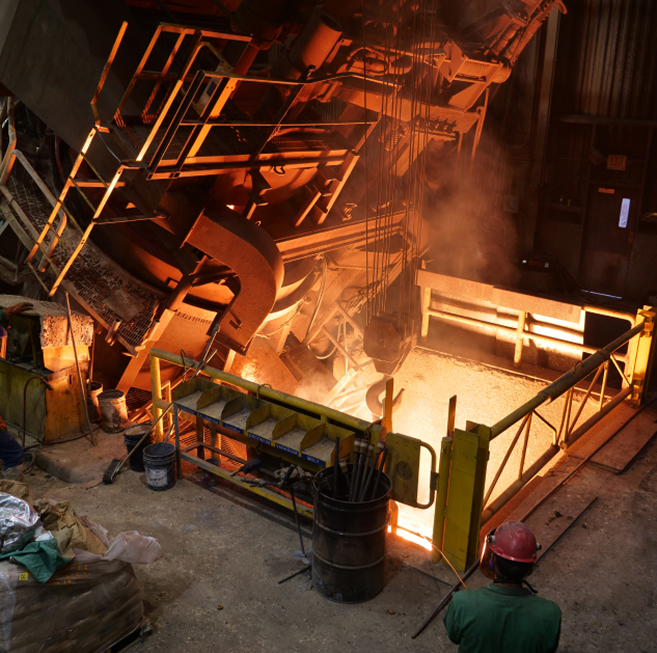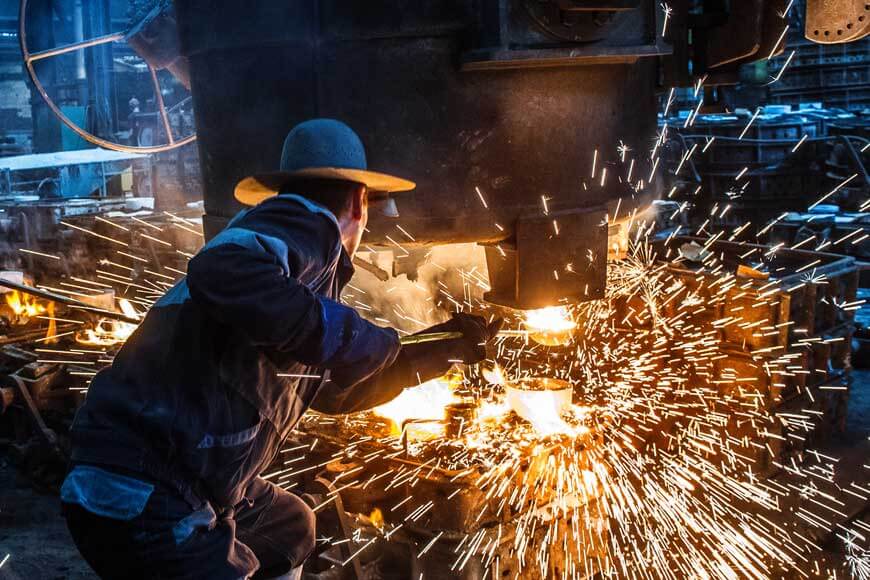Understanding the Art of Aluminum Casting for Efficiency
Wiki Article
Checking out the Art of Metal Casting: Strategies and Applications in Modern Foundries
Metal casting is a time-honored craft that combines artistry with design precision. From old techniques to modern-day innovations, this process has actually advanced considerably. Numerous techniques, such as sand casting and lost-wax casting, showcase the convenience of the medium. On the other hand, innovations like 3D printing are improving how shops operate. As the lines in between performance and artistry blur, one need to consider exactly how these developments effect both traditional methods and contemporary applications. What lies in advance in this developing landscape?The Basics of Metal Casting
Metal casting, a pivotal procedure in production, involves pouring liquified steel into a mold and mildew to achieve a wanted shape. This strategy works as a foundation in the manufacturing of complicated metal parts across numerous sectors. Crucial element of metal casting consist of the option of products, which can range from aluminum to steel, each selected for its details residential or commercial properties and application viability. The process starts with mold creation, which can be made from sand, steel, or ceramics, depending on the casting method made use of. The molten steel is then thoroughly poured into the mold, where it solidifies and cools down. Crucial factors such as temperature level control, cooling price, and mold layout considerably impact the end product's high quality and qualities. On top of that, comprehending the chemical and physical properties of the metal aids in maximizing casting efficiency, inevitably improving the performance of the production process and making certain top notch result tailored to details needs.Traditional Casting Strategies
Standard casting methods encompass a selection of methods that have stood the examination of time, showing their performance in creating intricate steel components. One noticeable method is sand casting, which uses a blend of sand and a bonding agent to develop molds. The convenience of sand casting permits the production of varied forms, making it suitable for both large and small production. Another remarkable technique is financial investment casting, usually made use of for complex and specific geometries. This approach includes creating a wax pattern that is coated in a ceramic covering, which is then heated to eliminate the wax, leaving a cavity for liquified metal. Additionally, die casting is made use of for high-volume production, where liquified steel is injected right into reusable steel mold and mildews. Each of these conventional strategies stays relevant, showcasing the craftsmanship and ability integral in the art of steel casting, while satisfying the demands of different markets.Modern Innovations in Metal Casting
As industries advance, developments in metal casting are reshaping production procedures and enhancing effectiveness. Advanced innovations such as 3D printing and computer-aided design (CAD) are revolutionizing mold and mildew production, enabling for intricate layouts that were formerly unattainable. These techniques promote fast prototyping, reducing preparations and cultivating creativity in product advancement.In addition, the combination of automation and robotics in foundries is enhancing operations, decreasing human error, and increasing security. Smart sensors and real-time surveillance systems make it possible for accurate control of temperature and material buildings, ensuring better results.
Moreover, sustainable practices are emerging, with the usage of energy-efficient furnaces and recycled products, reducing ecological impact. The Check Out Your URL fostering of composite materials and innovative alloys is additionally expanding the possibilities of metal casting, causing more powerful and lighter elements. Generally, these contemporary technologies are transforming steel casting into a much more effective, precise, and eco responsible industry.
Applications Throughout Numerous Industries

While varied markets progressively rely upon metal casting, the technique's adaptability plays a crucial function in meeting specific application demands. In the automotive industry, steel casting is crucial for creating engine elements, transmission real estates, and various other detailed components that require precision and sturdiness. The aerospace market take advantage of light-weight casted elements, guaranteeing both efficiency and gas effectiveness. Additionally, the building sector makes use of metal casting for architectural aspects, such as beams and sustains, enhancing the honesty of structures and bridges.
The energy market employs metal casting for generator blades and various other significant equipment that need to withstand severe conditions. Clinical gadgets also see applications of steel casting, especially in surgical instruments and prosthetics, where precision is important - Metal Foundry. Generally, the convenience and integrity of steel casting make it vital across different areas, adding to the innovation of technology and infrastructure in modern-day culture
The Artistic Side of Metal Casting
Although usually associated with industrial applications, metal casting also finds its location in the domain of art, where knowledgeable artisans change molten metal into detailed designs and meaningful sculptures. This imaginative side of metal casting incorporates diverse methods, consisting of sand casting, lost-wax casting, and financial investment casting, each offering distinct possibilities for creativity. Musicians utilize these methods to create jobs that vary from abstract types to lifelike depictions, permitting individual expression and commentary on modern concerns.
Regularly Asked Questions
What Precaution Are Vital in a Metal Casting Foundry?
Important security actions in a metal casting factory consist of individual safety equipment, correct ventilation, emergency methods, training in handling molten metals, normal devices upkeep, and clear communication of threats to ensure worker safety and health. Aluminum Foundry.Just How Do Environmental Rules Effect Metal Casting Processes?
Environmental laws significantly influence metal casting procedures by mandating making use of cleaner innovations, minimizing exhausts, and promoting waste management techniques. Conformity often requires financial investments in devices, check this site out training, and alterations to existing procedures to minimize ecological impact.What Are the Usual Defects in Metal Spreadings?
Common flaws in metal castings include porosity, shrinking, additions, and misruns. These issues can occur from inappropriate mold layout, insufficient temperature level control, or contamination, eventually influencing the structural stability and general top quality of the last item.Just How Is Waste Managed During Metal Casting Manufacturing?
Waste management in steel casting production entails recycling scrap metal, executing effective product use, and using sophisticated technologies to reduce waste. Shops take on practices like sand reclamation and correct disposal techniques to decrease environmental impact.What Occupation Opportunities Exist in the Metal Casting Industry?
The steel casting market uses diverse job opportunities, consisting of roles such as factory supervisor, metallurgical engineer, quality assurance assessor, pattern maker, and production manager, satisfying numerous ability collections and proficiency in producing processes.Metal casting, a critical Get the facts procedure in production, entails putting liquified steel into a mold to attain a wanted shape. Furthermore, die casting is utilized for high-volume production, where liquified metal is injected into reusable steel mold and mildews. While varied sectors progressively rely on steel casting, the method's versatility plays an important duty in conference certain application requirements. Typically associated with commercial applications, steel casting likewise locates its location in the domain of art, where skilled craftsmens transform liquified metal right into complex designs and meaningful sculptures. Waste administration in steel casting production entails recycling scrap steel, executing reliable material use, and utilizing sophisticated technologies to decrease waste.
Report this wiki page